Adding fast-growing fence plants and vines to your yard can quickly provide an attractive and natural screen, enhancing both privacy and beauty in your outdoor space.
These plants serve as an excellent way to create visual interest, as they climb walls, fences, trellises, and other structures.
Not only do they look great, but they also create a lush, green backdrop that helps to soften and blend hardscape elements in the landscape.
Selecting the appropriate plants and vines depends on factors such as your local climate, the amount of sunlight available, and the desired level of maintenance.
With a wide variety of options available, from flowering vines to fragrant climbers, you'll be able to find the perfect plants to spruce up your yard and create a beautiful and functional living fence.
1. Climbing Hydrangea
Climbing hydrangea is a stunning plant that thrives in partial shade. This deciduous vine can grow up to 50 feet long and features large, heart-shaped leaves along with clusters of fragrant white flowers in the summer.
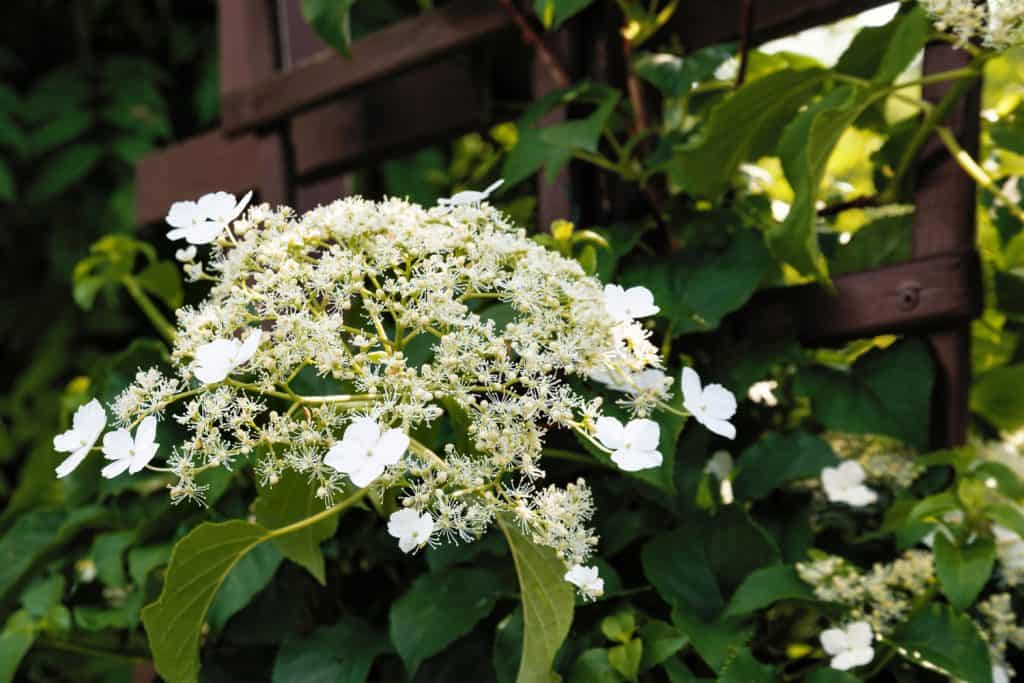
The aerial rootlets allow it to cling to surfaces, making it an excellent choice for covering fences or walls.
You might also like: 11 Beautiful Climbing Flowering Shrubs And Vines
2. Golden Hops
Golden hops is a fast-growing, herbaceous perennial vine. It prefers full sun and can reach a height of 25 feet in just one growing season.
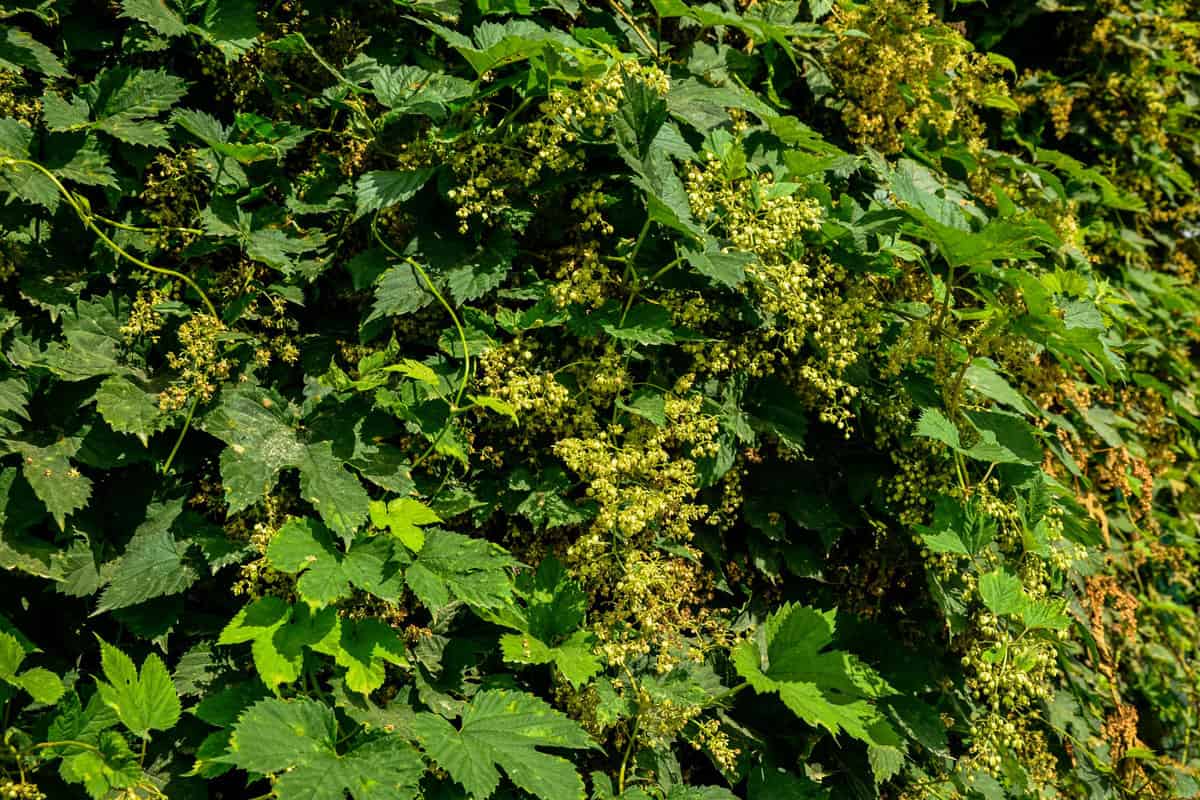
The vibrant, golden-yellow leaves add a pop of color to any garden, and the vine produces cone-like flowers that can be used for brewing.
Golden hops is an excellent option for those looking to provide shade and privacy along a fence or trellis.
3. Silver Lace Vine
The silver lace vine is an easy-to-grow, vigorous perennial with a rapid growth rate. It can cover a fence or trellis in no time, growing up to 20 feet per year in sunny or partially shaded locations.
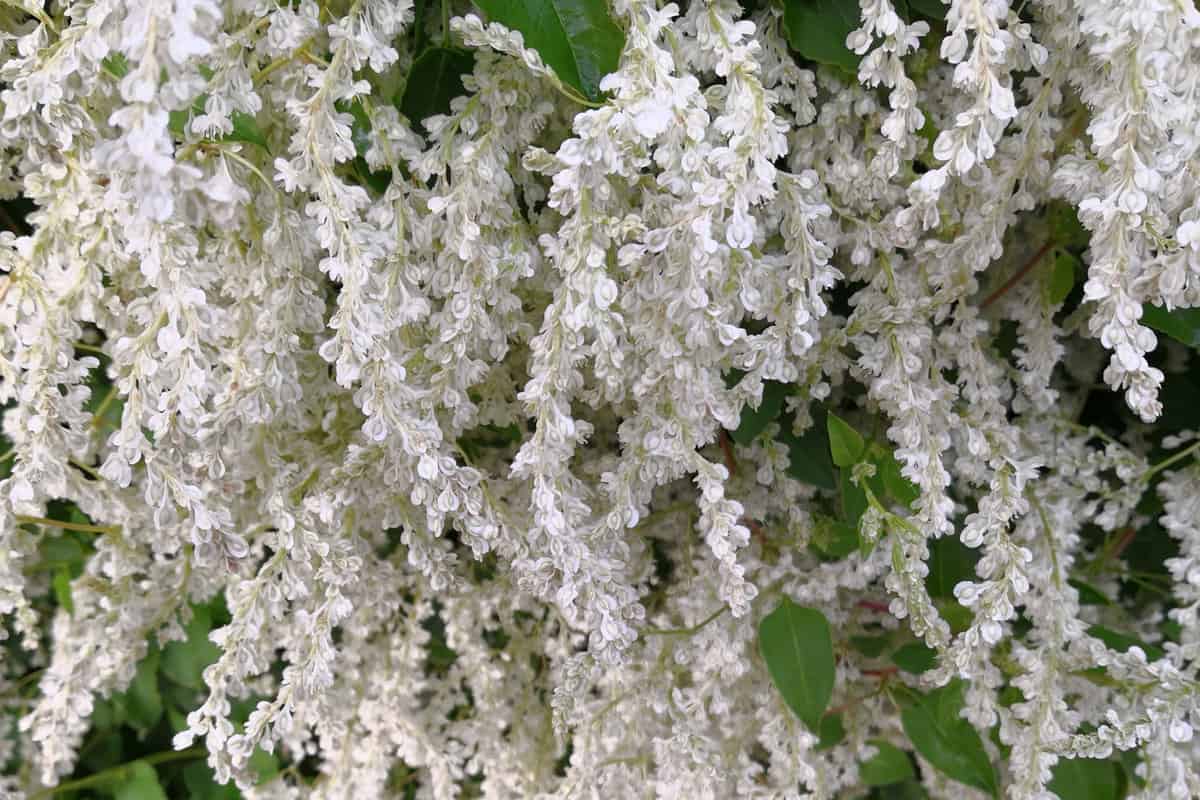
The vine produces small, fragrant white flowers in summer and fall and provides a lush, green screen for privacy.
4. Trumpet Vine
The trumpet vine has beautiful, trumpet-shaped flowers that attract hummingbirds and pollinators.
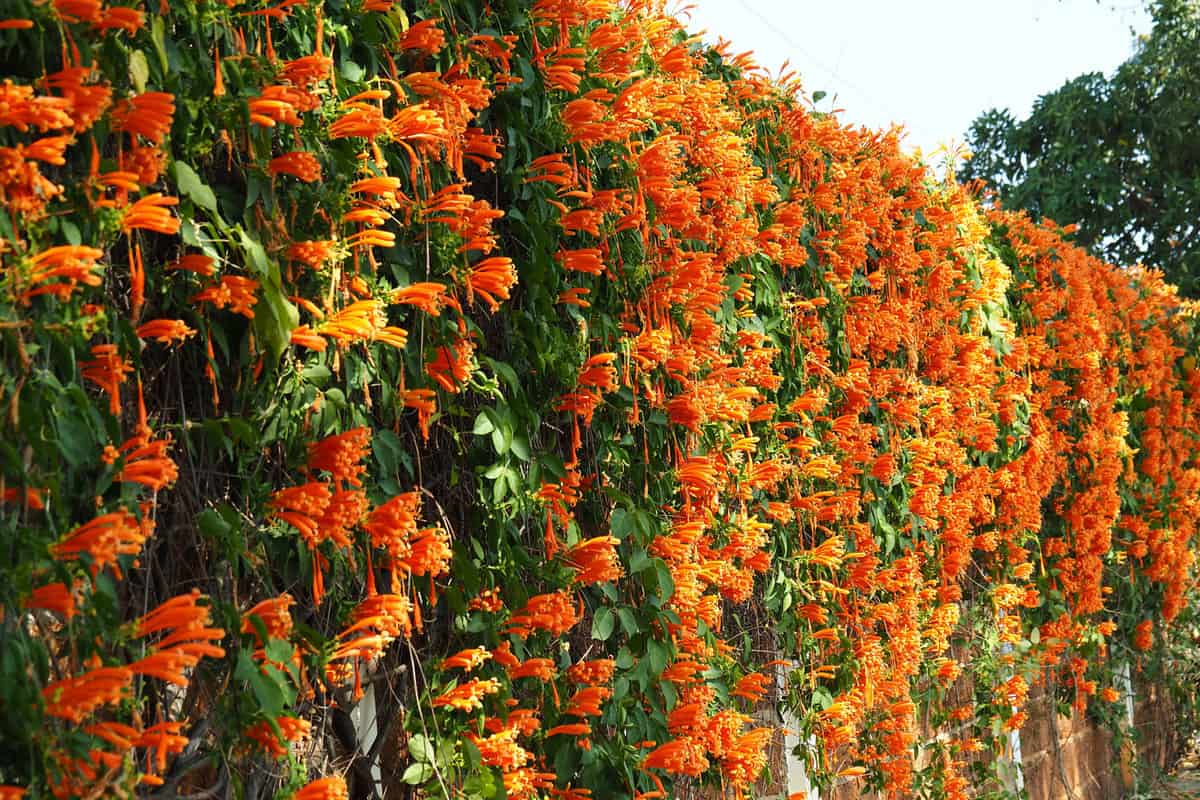
This vine can grow up to 40 feet and thrives in full sun.
It can easily climb various structures like fences, walls, and trellises, making it perfect for camouflaging unattractive features in your yard.
However, it's essential to be aware of its invasive nature, as it spreads through underground runners. To control its growth, make sure to prune it regularly and provide a designated space.
5. Wisteria
Wisteria is a classic choice for any garden, recognized for its cascading clusters of fragrant, purple, or white flowers.
This large, twining vine can grow up to 25 feet in length and prefers a sunny location.

While Wisteria is undoubtedly beautiful, it needs proper care and support, as it can become quite heavy.
Ensure you have a sturdy structure like a trellis, arbor, or fence for it to climb. Additionally, prune the vine right after flowering to control its size and shape.
Be sure to check out: 21 Trellis Ideas For Vines And Climbing Plants
6. Clematis
Clematis is a versatile and colorful vine that can adorn fences, arbors, and other structures in your yard.

With various bloom colors and sizes, clematis offers endless possibilities for your garden design.
This moderate-growing vine climbs by twining and can reach up to 30 feet in length.
Clematis requires regular pruning to maintain its size and appearance, and it prefers a sunny location with well-drained soil.
Keep its roots cool and moist by adding a layer of mulch or ground cover plants around the base.
7. Passionflower
Lastly, we have the exotic Passionflower. This unique vine is known for its intricate flowers and tropical appearance.
It can grow up to 15-20 feet in length and prefers sun to partial shade.

Passionflower vines can beautify any yard, but they are more than just ornamental. Some species produce edible fruit, while others are valued for their medicinal properties.
Overall, this stunning vine can be an excellent addition to your garden, providing both beauty and functionality.
Benefits of Fence Plants
Fence plants can greatly enhance the visual appeal and functionality of your yard. They provide a natural and attractive barrier that adds privacy and security to your outdoor spaces.
Additionally, these plants offer various environmental and economic benefits.

One significant advantage of fence plants is their ability to reduce wind and noise pollution.
By forming a dense barrier, these plants can effectively block strong winds and reduce the amount of dust and debris that enters your yard.
This wind protection also improves energy efficiency, as it can help to insulate your home from cold drafts.
Another benefit of fence plants is their ability to support local ecosystems. Many native plants and vines provide essential habitats and food sources for a variety of wildlife, such as birds and pollinating insects.
By incorporating these plants into your landscaping, you contribute to the preservation of biodiversity in your area.
Fence plants can also have economic benefits. By investing in a living fence, you can save money on traditional fencing materials and maintenance costs.
Living fences also tend to be more flexible, as they can be pruned or trained to fit specific shapes or designs.
This versatility allows you to create a highly customized and visually appealing boundary around your property.
You might also like: Wall Fence: What Is It? Pros, Cons, Ideas And Inspiration
Choosing the Right Plant
When selecting fast-growing fence plants and vines for your yard, it's important to consider the specific needs of your space.
Some plants thrive in full sun, while others prefer partial shade. Soil type, moisture, and regional climate also play a significant role in the success of your chosen plant.
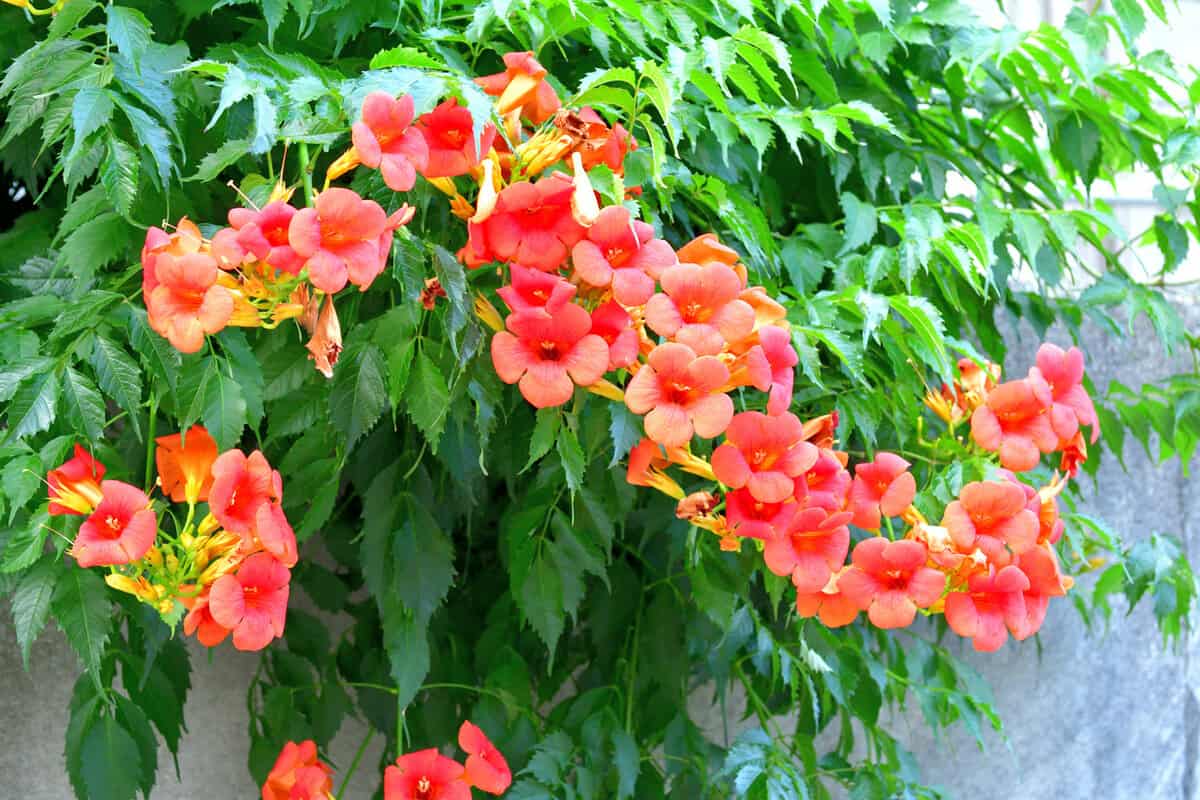
One popular option for fence coverage is living snow fences, which are composed of trees, shrubs, and native grasses.
These plants not only beautify your property but also help manage blowing and drifting snow in colder climates.
Vines can also be an excellent choice for fences, especially if you're looking to camouflage an unattractive chain-link fence.
Clematis is a moderate-growing vine that works well at the base of a small tree or shrub, while wisteria and trumpet vine can climb effectively using trellises or arbors for support.
Remember to think about the maintenance involved with the plants you choose.
Some fast-growing vines may require regular pruning to prevent them from engulfing nearby trees or causing structural damage to the fence.
Consider the overall size and shape of the plant when it's fully grown to ensure it will create the desired effect in your yard.
Lastly, consider incorporating a variety of plants to create a visually appealing, biodiverse environment.
Mixing different plant types and textures can provide added interest, depth, and charm to your fence line.
Planting and Maintenance Tips
Planting fast-growing fence plants and vines can provide beauty, privacy, and a natural barrier in your yard. To ensure their healthy growth and optimal performance, follow these friendly tips.

Plant properly: Plant vines and fence plants during their optimal growth period based on your region's frost-free days. Be sure to space your plants appropriately to allow sufficient air circulation and growth.
Support your vines: Vines need proper support to climb and cover your fence effectively. Install poles, chain-link fences, wire, trellises, or arbors for vines to climb on.
Be sure the support material is suitable for the type of vine, such as thin poles for tendrils or thicker poles for twining stems.
Watering: Regular and consistent watering is crucial for the health and growth of your fence plants and vines. Find out the specific watering needs of your chosen plants and establish a watering schedule accordingly.
Pruning and maintenance: Regularly prune your fence plants and vines to encourage new growth, maintain their shape and prevent diseases. Avoid over-fertilizing, as it can lead to excessive growth and weaker structures.
Related: Where Do You Cut When Pruning A Plant? [And At What Angle?]
By following these tips, your fast-growing fence plants and vines will flourish, providing a beautiful and functional feature in your yard.
In Closing
Incorporating fast-growing fence plants and vines in your yard can transform your outdoor space into a beautiful, natural haven.
Regardless of the specific plant chosen, it is essential to manage the growth of vines to ensure they do not compromise the health of trees, walls, or fences.
Homeowners should consider factors such as growth rate, color, and maintenance requirements when selecting the best plants and vines for their specific landscaping needs.
With proper care and consideration, these plants can be a delightful addition to any outdoor space, providing both beauty and functionality for years to come.
